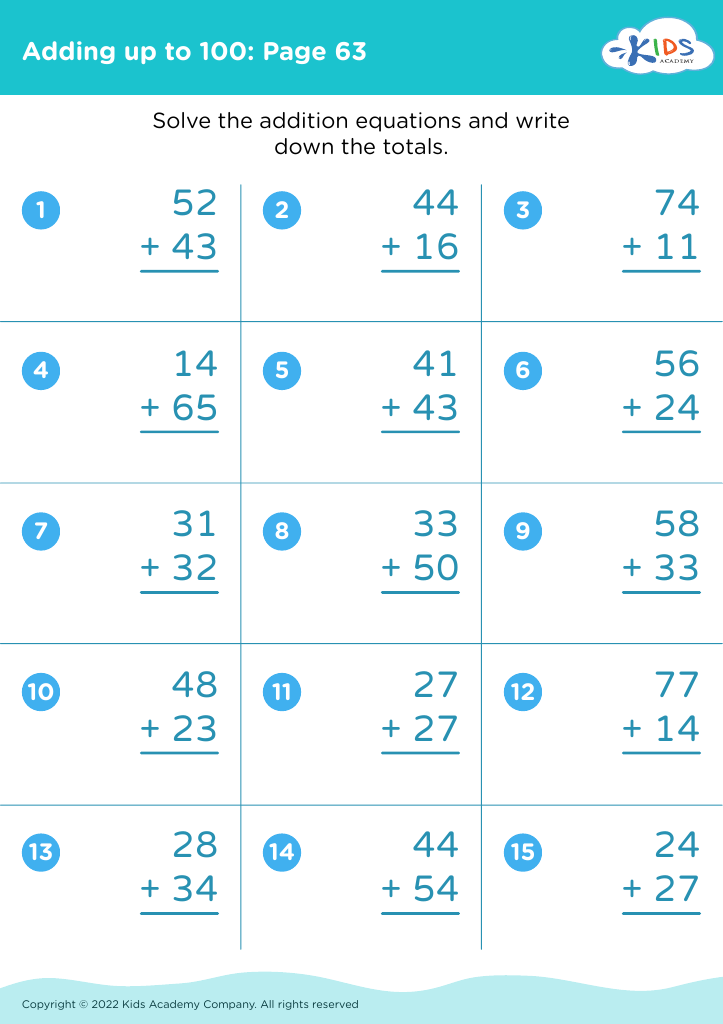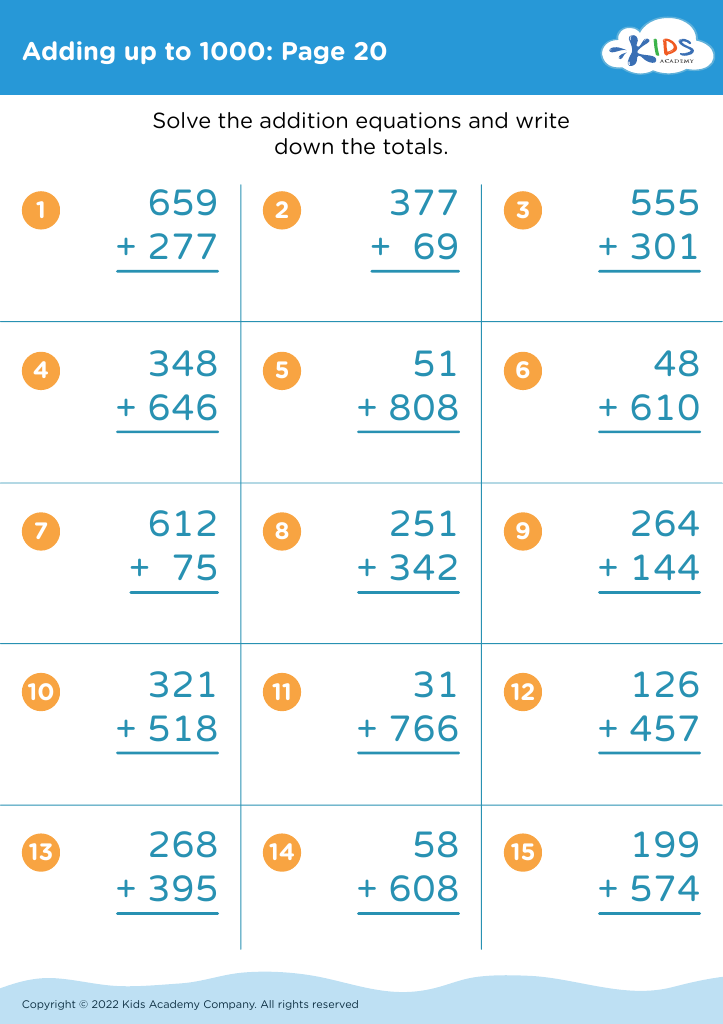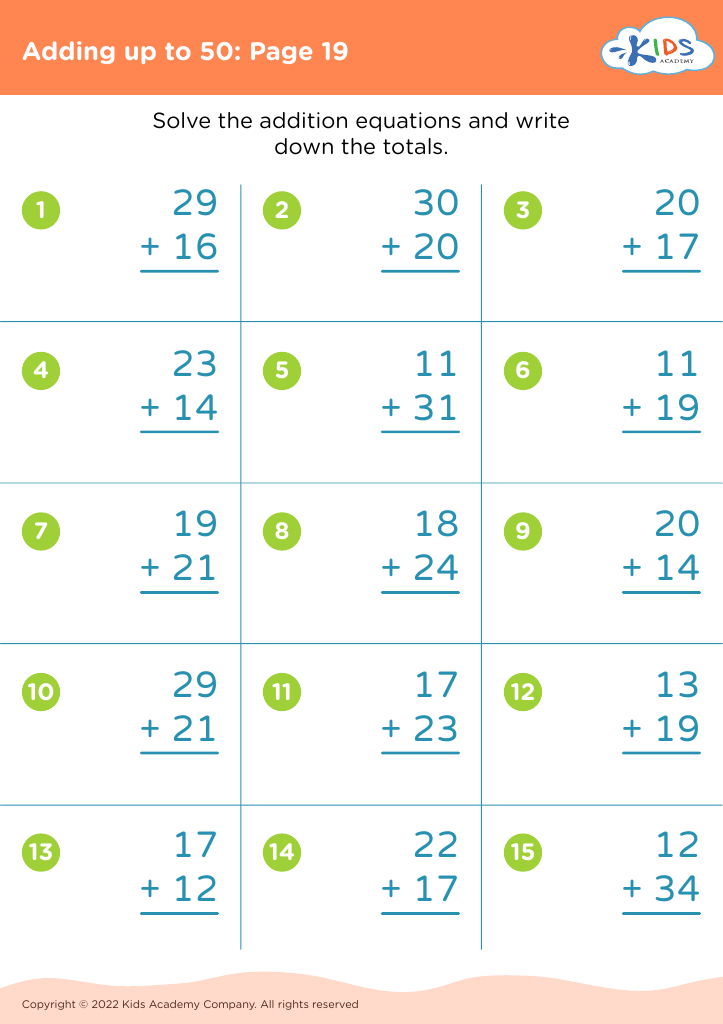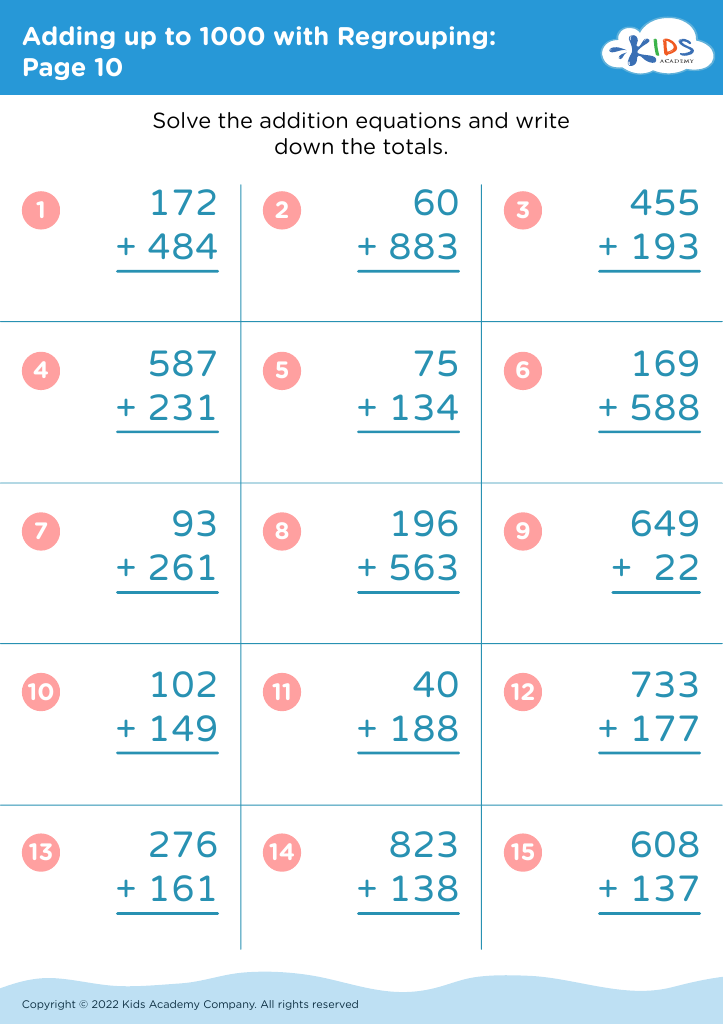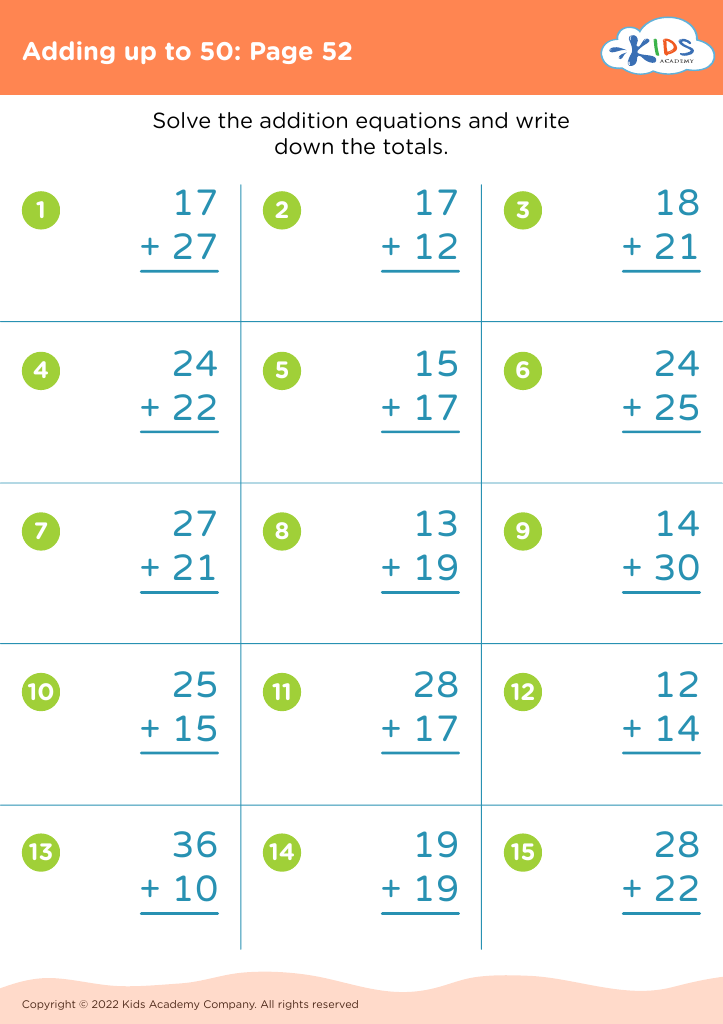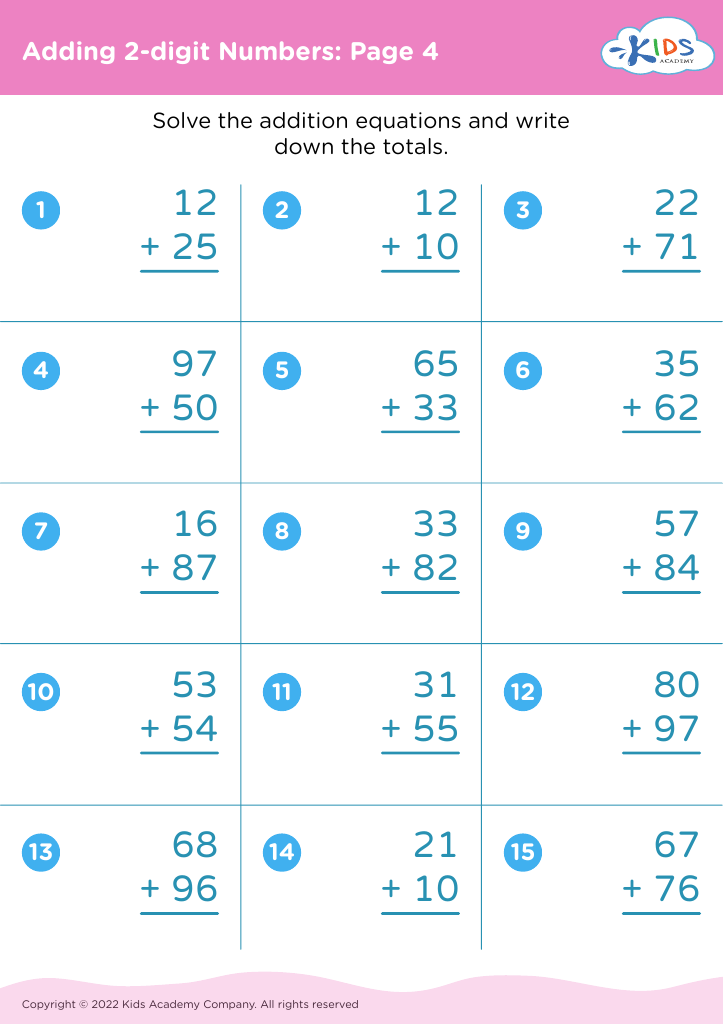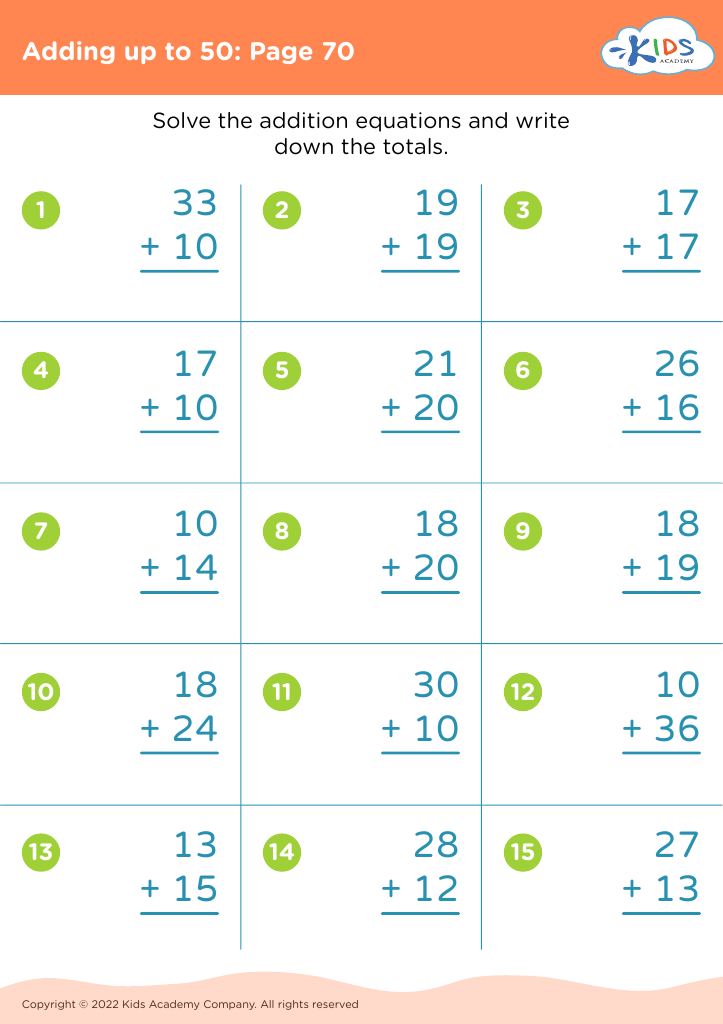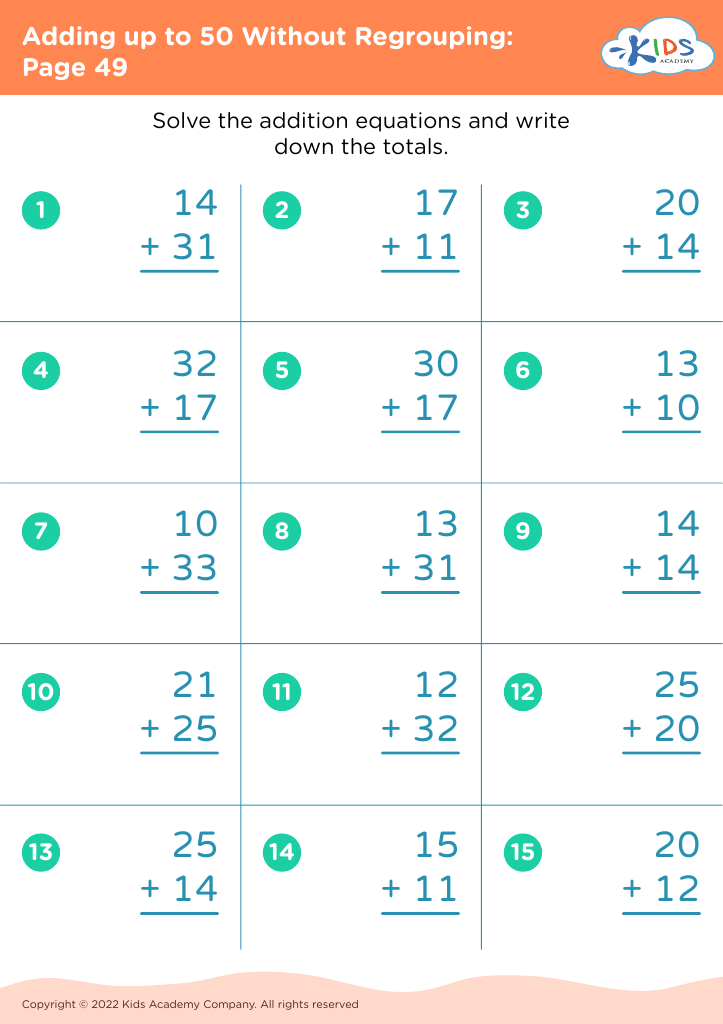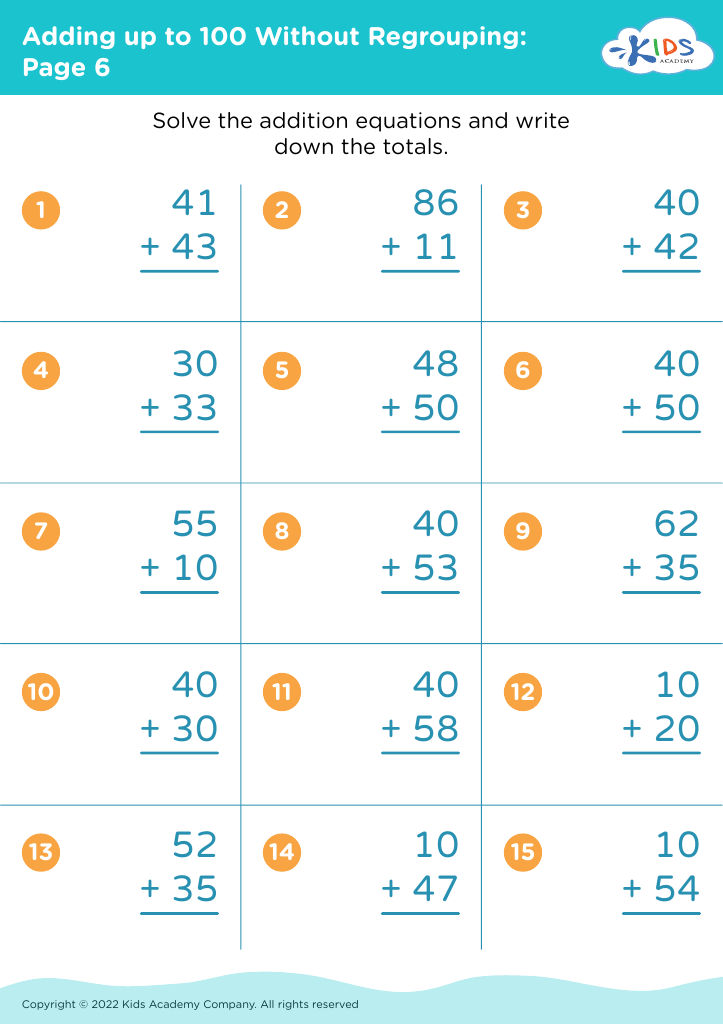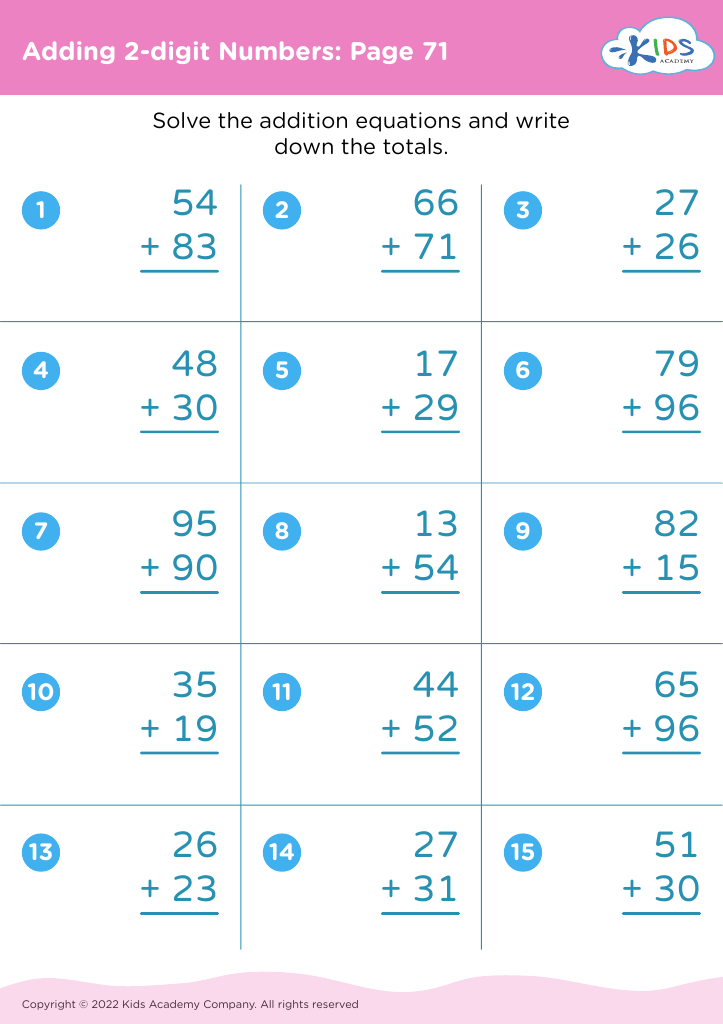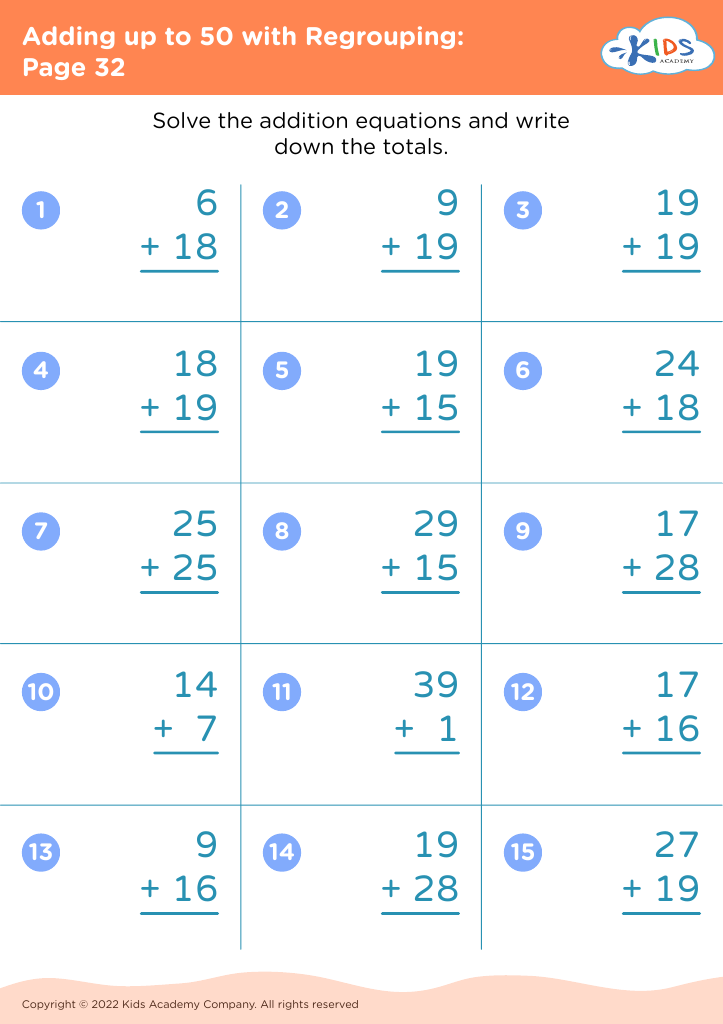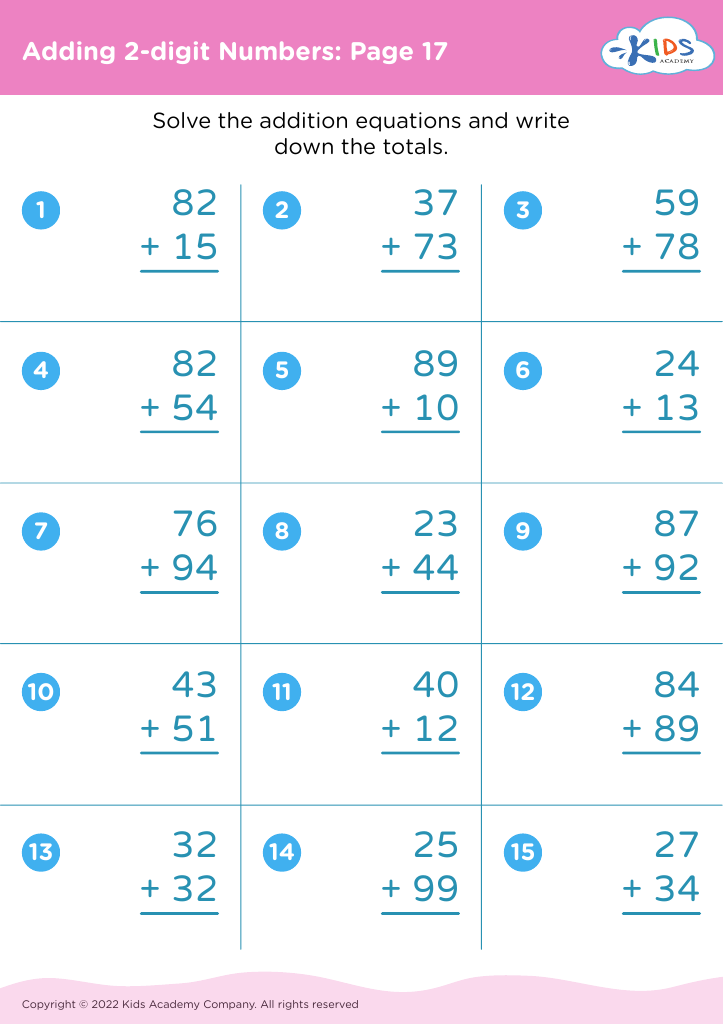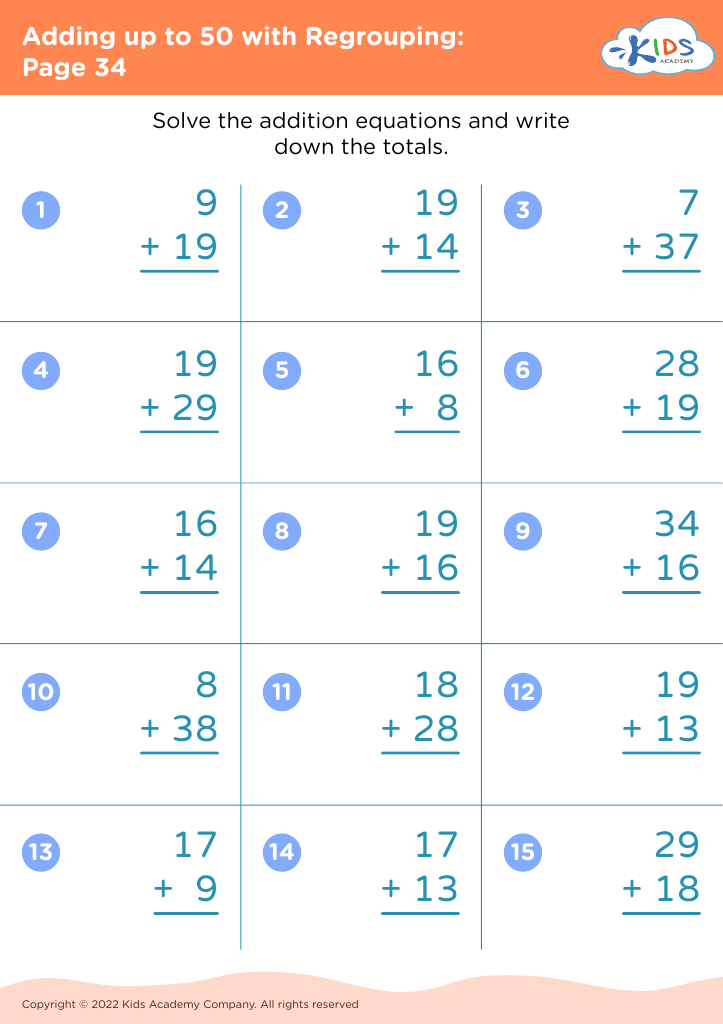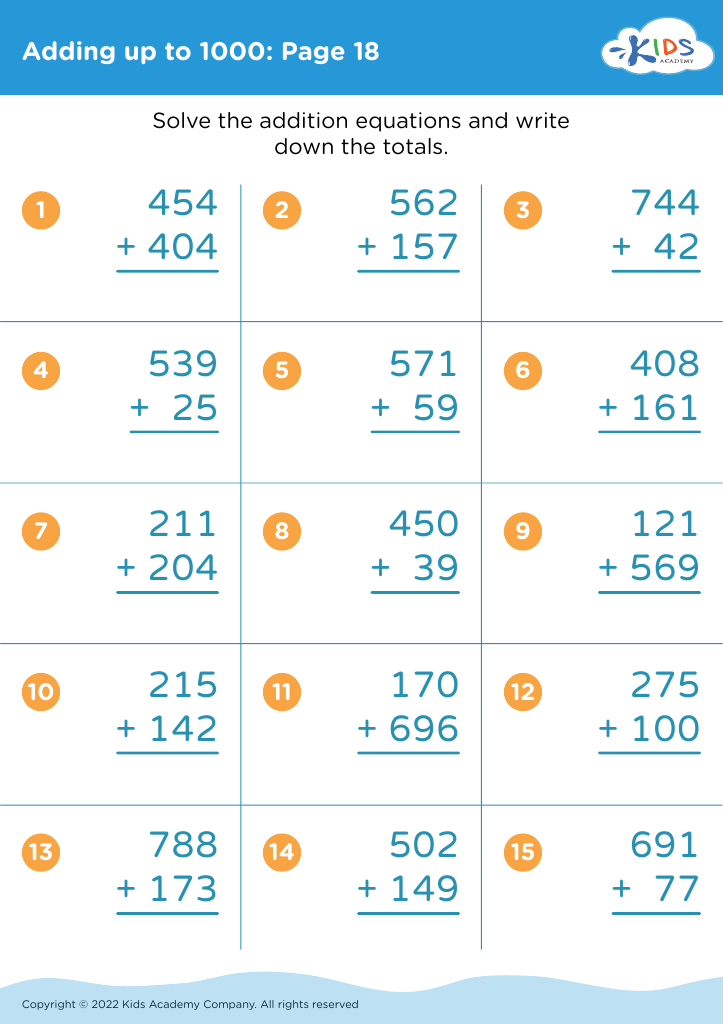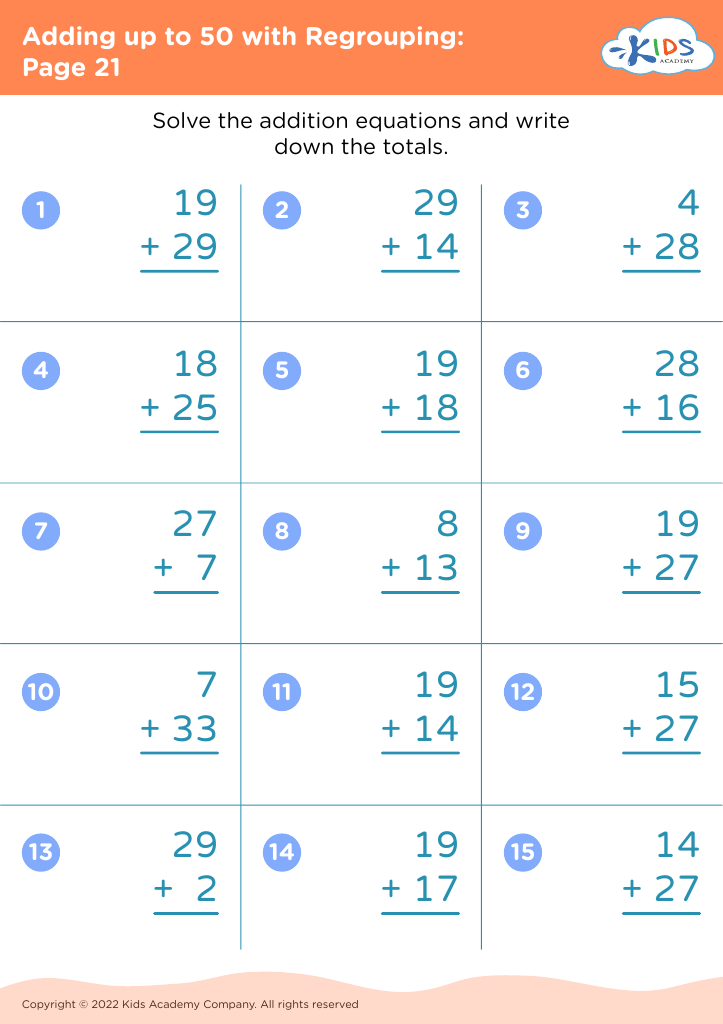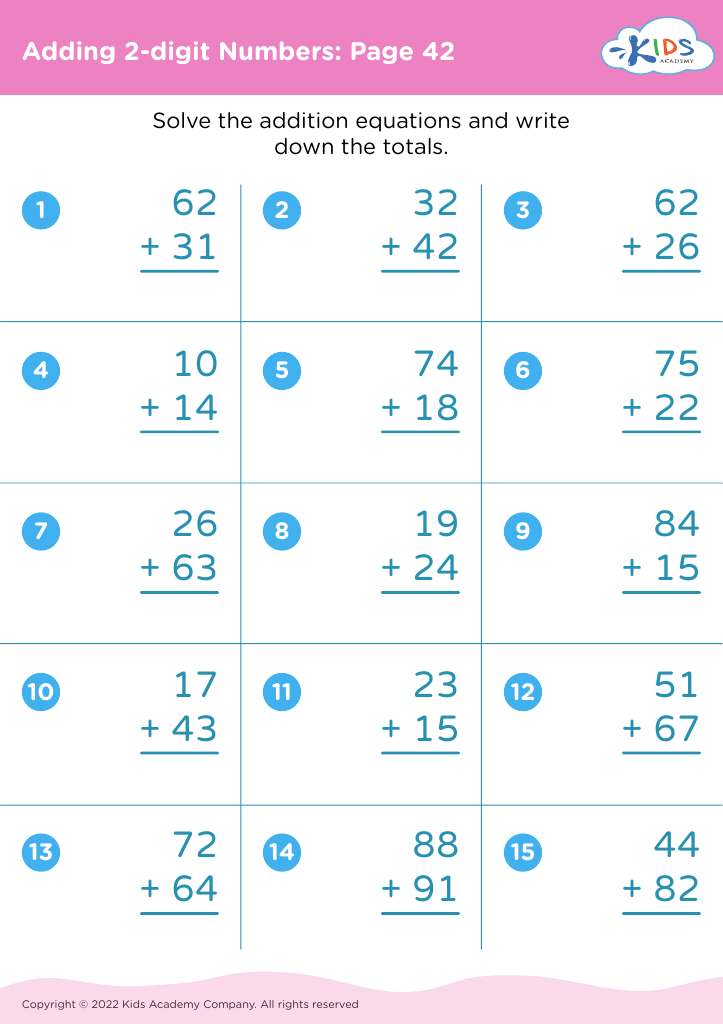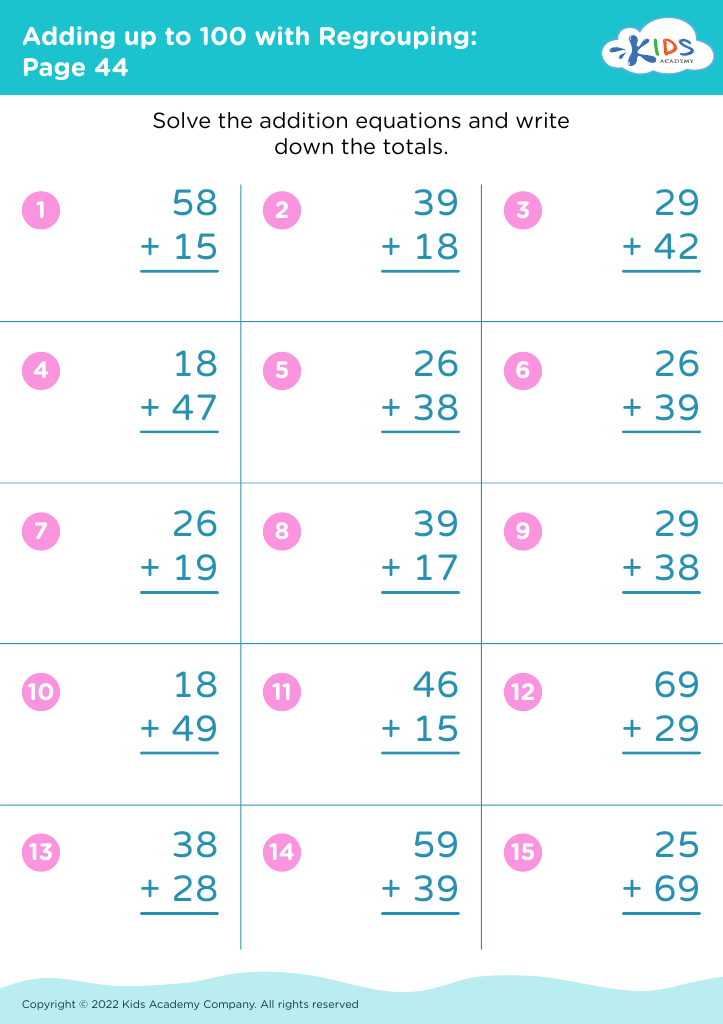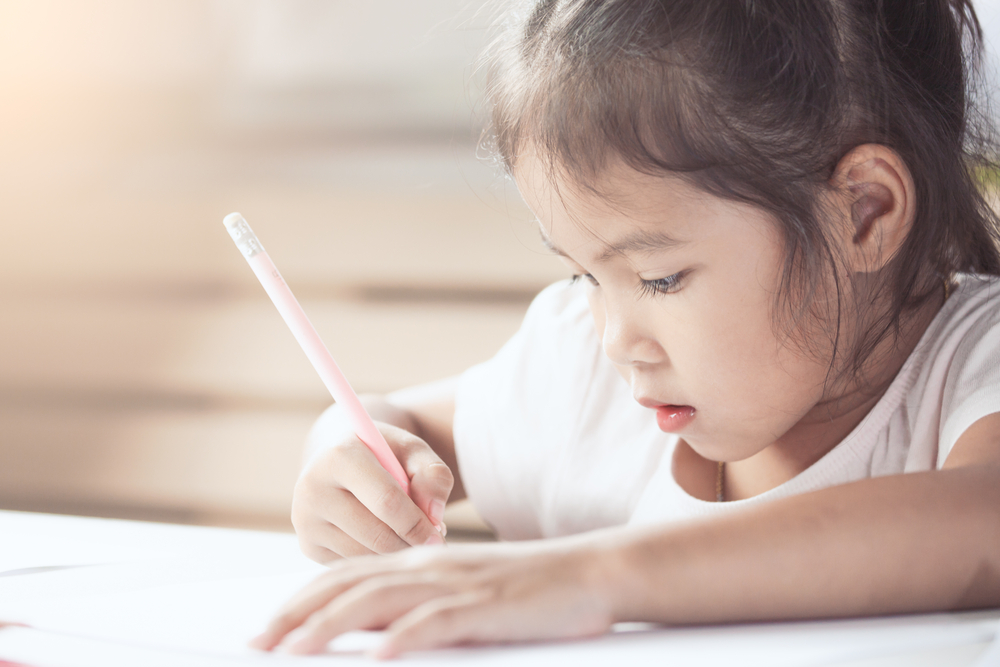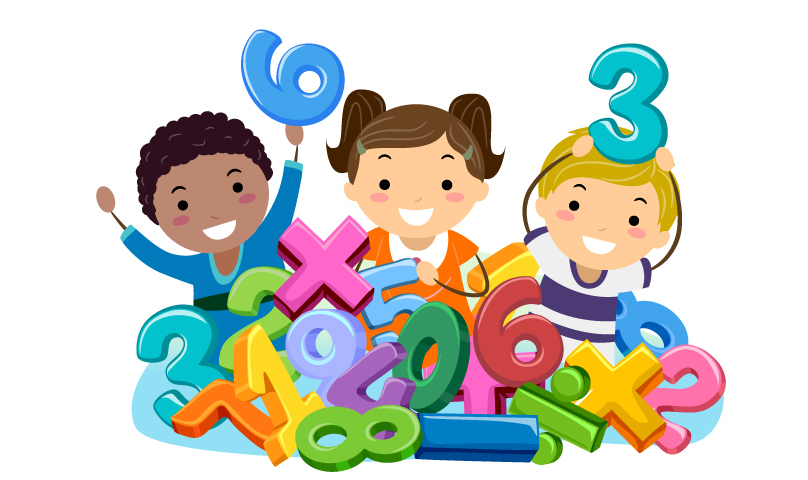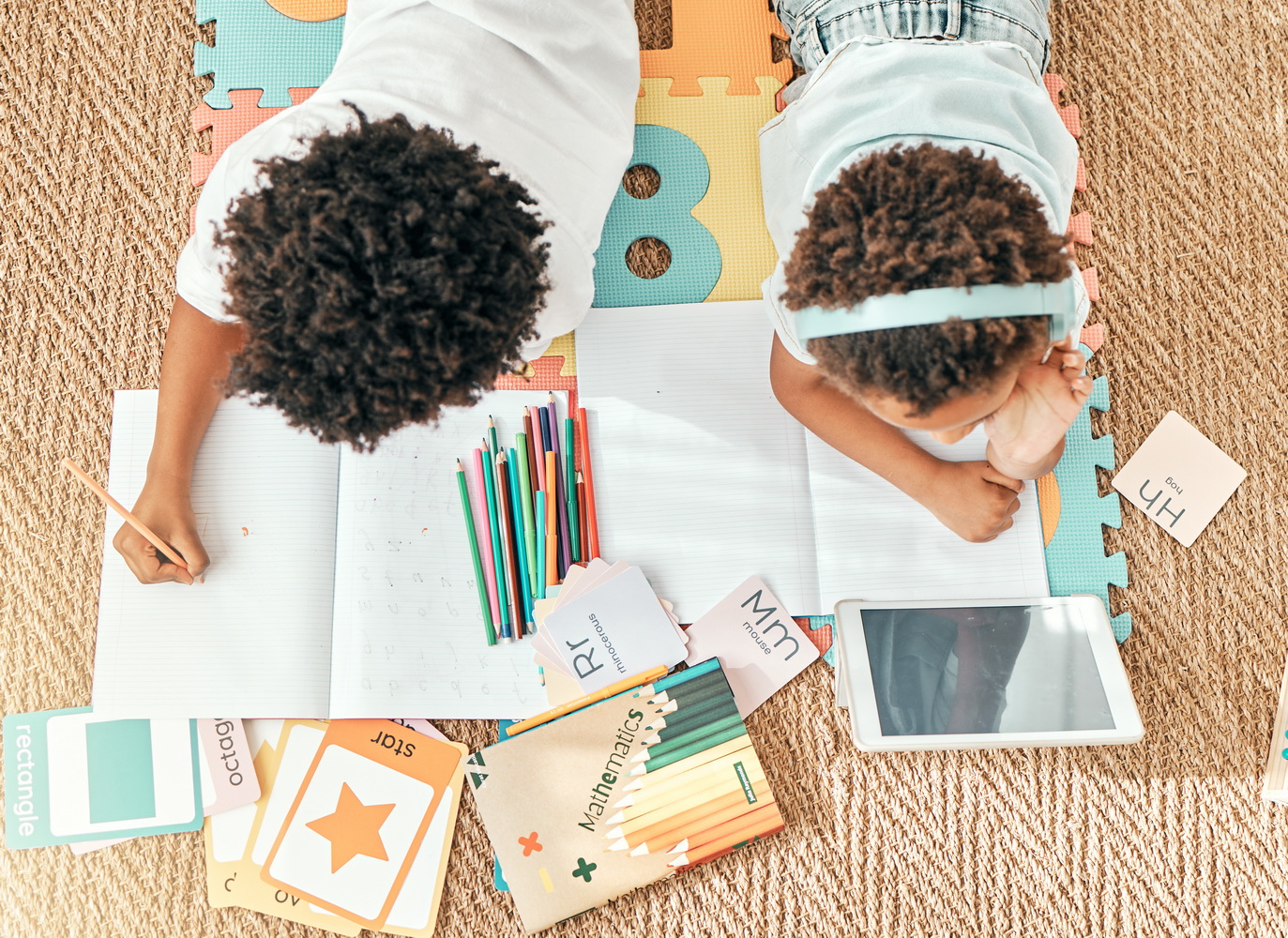Understanding symmetry Addition Worksheets for Ages 6-9
24 filtered results
-
From - To
Discover the fun and engaging "Understanding Symmetry Addition Worksheets" designed for children aged 6-9. These vibrant worksheets help young learners explore the concept of symmetry while mastering addition skills. Each activity encourages creative thinking and promotes mathematical understanding through visual aids and interactive challenges. Students will enjoy identifying symmetrical patterns and applying addition in various contexts, fostering critical thinking. With a focus on balancing fun and learning, these worksheets provide a solid foundation in math while enhancing cognitive abilities. Perfect for classroom use or at-home practice, our printable resources make learning about symmetry an exciting adventure for kids!
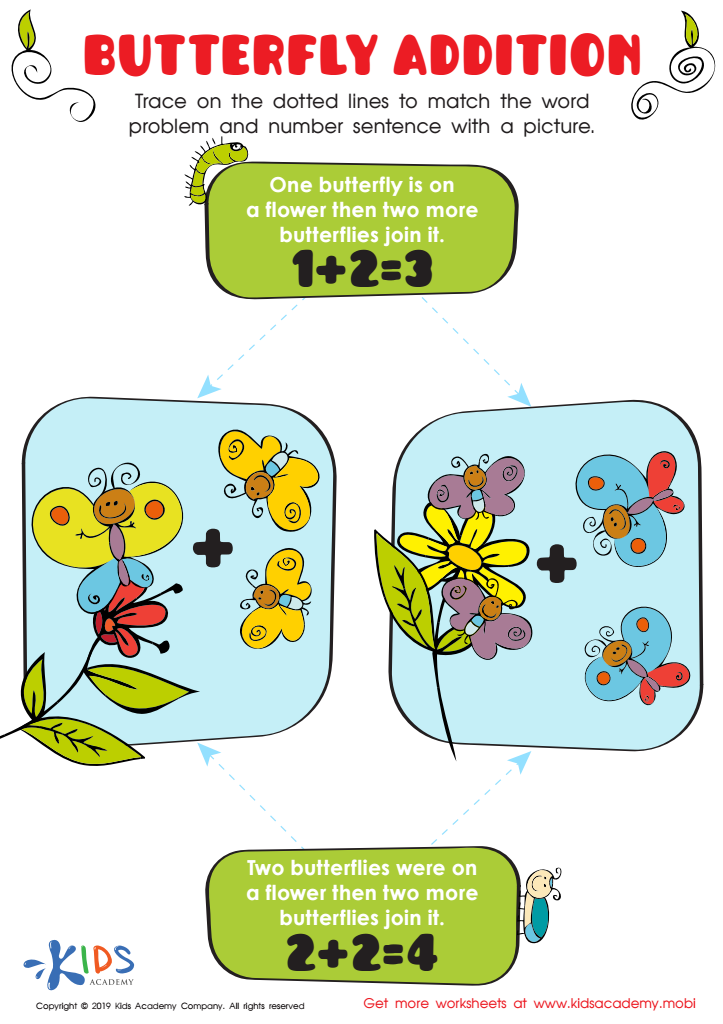

Butterfly Addition Worksheet
Understanding symmetry in addition is crucial for children aged 6-9, as it forms a foundational concept in mathematics, encouraging logical thinking and problem-solving skills. Symmetry in addition involves recognizing that pairs or combinations of numbers can be arranged in balanced ways, fostering an understanding of how numbers relate to one another. This understanding can help students recognize patterns, making mental math easier and more intuitive.
When parents and teachers emphasize this concept, they empower children to grasp the idea of number partnerships—such as 4 + 6 and 5 + 5 equating to the same sum. This awareness enhances their number sense and prepares them for more complex math concepts in later grades.
Additionally, by exploring symmetry, children develop spatial awareness, which can enhance their overall cognitive skills. Engaging in activities that highlight symmetry in math encourages creativity and analytical thinking.
Furthermore, fostering such understanding in young learners can ignite enthusiasm for mathematics, making it a balanced and enjoyable subject rather than a tedious chore. Overall, prioritizing the understanding of symmetry in addition is not only beneficial for numerical proficiency but also enriches children's cognitive and emotional development in their early education journey.
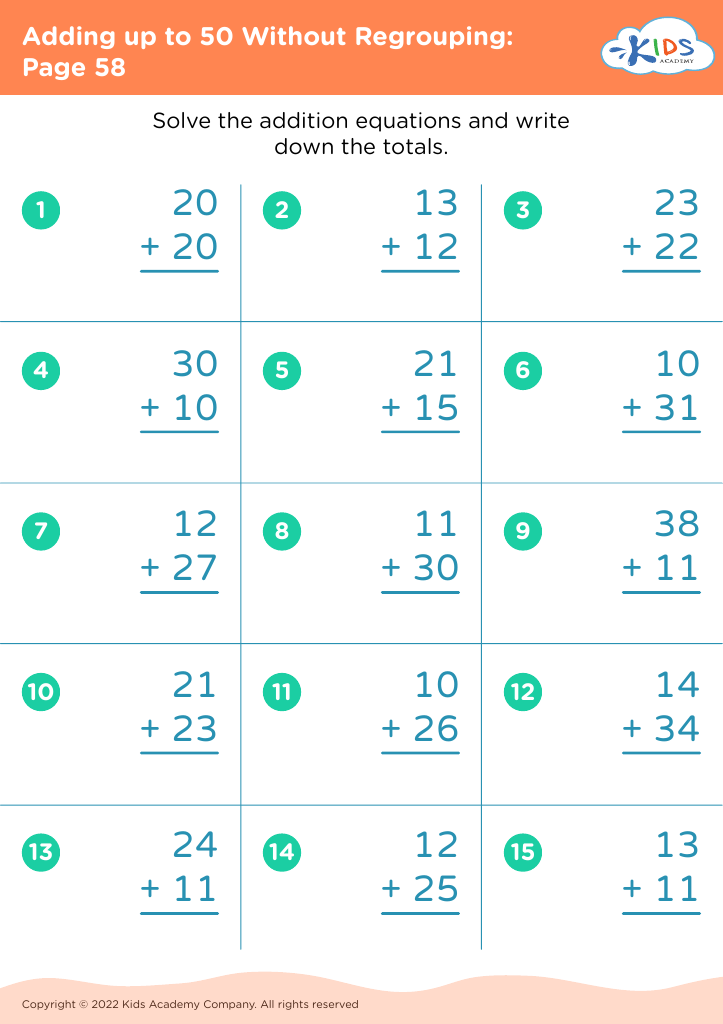

 Assign to My Students
Assign to My Students
